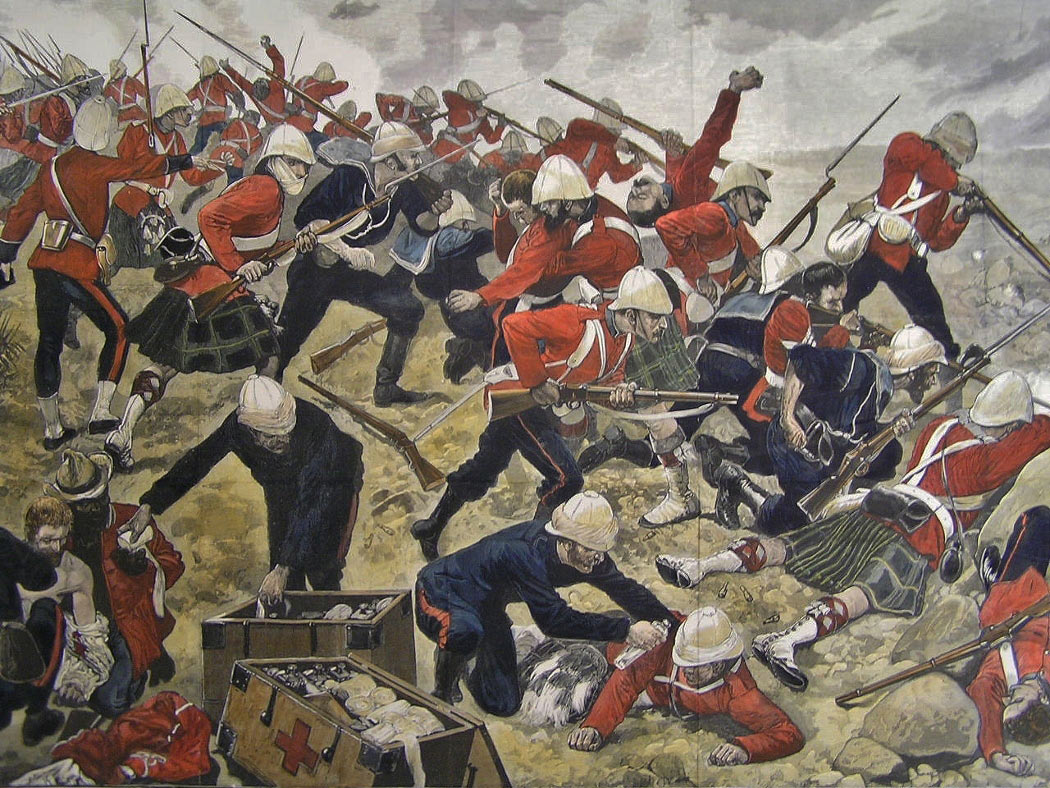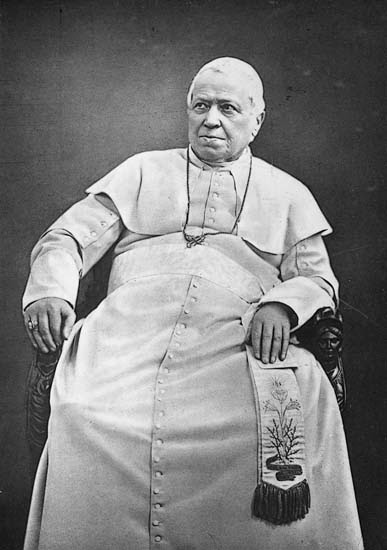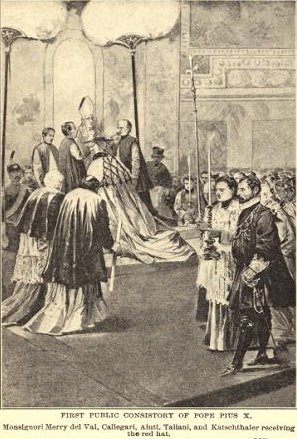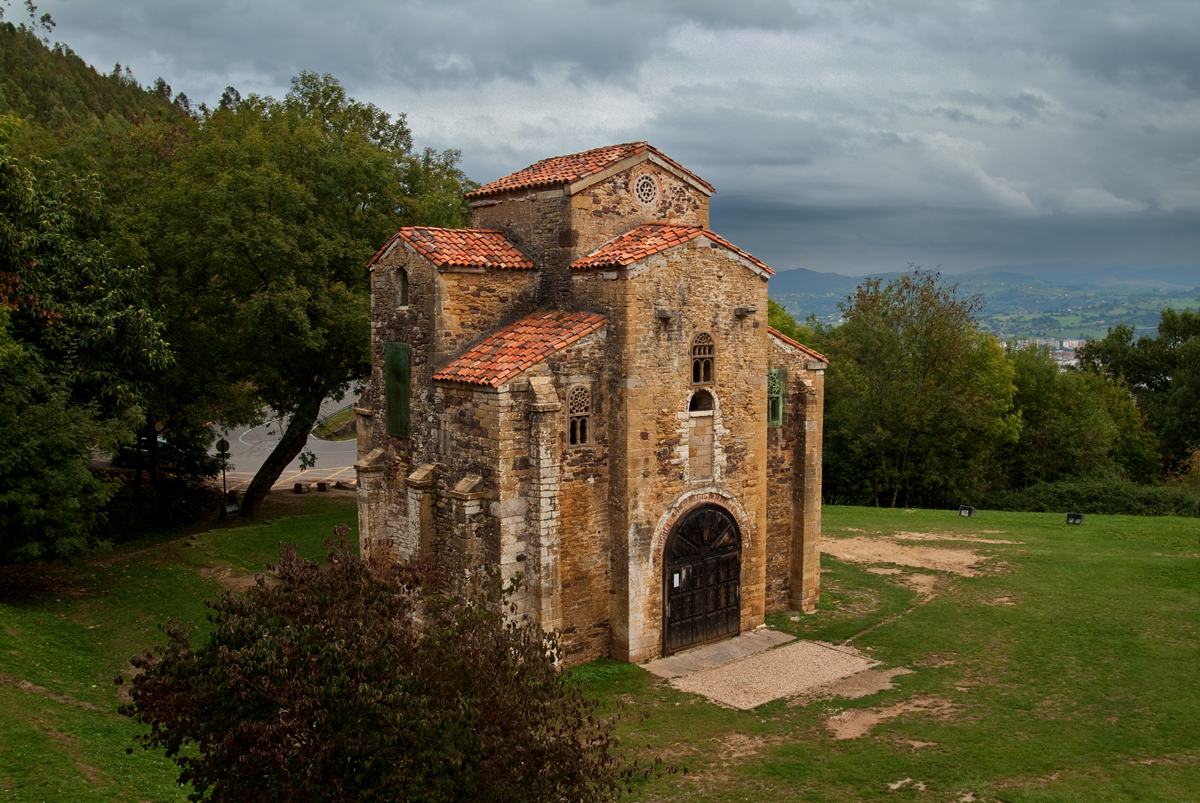|
Manuel García Gil
Manuel García Gil (14 March 1802 - 28 April 1881) was a Spanish people, Spanish Roman Catholic Church, Roman Catholic Cardinal (Catholic Church), cardinal and member from the Order of Preachers who served as the Archbishop of Zaragoza from 1858 until his death. He served prior to this as the Bishop of Badajoz and before that served as a professor in various Dominican houses. Pope Pius IX raised him to the cardinalate in 1877 as the Santo Stefano al Monte Celio, Cardinal-Priest of Santo Stefano al Monte Celio. Life Manuel García Gil was born on 14 March 1802. He studied for the Priesthood in the Catholic Church, priesthood at the seminary in Lugo and entered the Order of Preachers while he was still a Diaconate, deacon at their convent in Lugo in 1826. He was Ordination in the Catholic Church, ordained to the priesthood on 10 March 1827 and following this served as a professor of theology in the Dominican convents of Lugo and Santiago de Compostela. He also served as a professo ... [...More Info...] [...Related Items...] OR: [Wikipedia] [Google] [Baidu] |
His Eminence
His Eminence (abbreviation H.Em. or HE) is a style (manner of address), style of reference for high nobility, still in use in various religious contexts. Catholicism The style remains in use as the official style or standard form of address in reference to a cardinal (Catholicism), cardinal of the Catholic Church, reflecting his status as a Prince of the Church. A longer, and more formal, title is "His [or Your when addressing the cardinal directly] Most Reverend Eminence". Patriarchs of Eastern Catholic Churches who are also cardinals may be addressed as "His Eminence" or by the style particular to Catholic patriarchs, His Beatitude. When the Grand master (order), Grand Master of the Sovereign Military Order of Malta, the head of state of their sovereign territorial state comprising the island of Malta until 1797, who had already been made a Reichsfürst (i.e., prince of the Holy Roman Empire) in 1607, became (in terms of honorary order of precedence, not in the actual churc ... [...More Info...] [...Related Items...] OR: [Wikipedia] [Google] [Baidu] |
Convent
A convent is an enclosed community of monks, nuns, friars or religious sisters. Alternatively, ''convent'' means the building used by the community. The term is particularly used in the Catholic Church, Lutheran churches, and the Anglican Communion. Etymology and usage The term ''convent'' derives via Old French from Latin ''conventus'', perfect participle of the verb ''convenio'', meaning "to convene, to come together". It was first used in this sense when the eremitical life began to be combined with the cenobitical. The original reference was to the gathering of mendicants who spent much of their time travelling. Technically, a monastery is a secluded community of monastics, whereas a friary or convent is a community of mendicants (which, by contrast, might be located in a city), and a canonry is a community of canons regular. The terms abbey and priory can be applied to both monasteries and canonries; an abbey is headed by an abbot, and a priory is a lesser depend ... [...More Info...] [...Related Items...] OR: [Wikipedia] [Google] [Baidu] |
1881 Deaths
Events January * January 1– 24 – Siege of Geok Tepe: Russian troops under General Mikhail Skobelev defeat the Turkomans. * January 13 – War of the Pacific – Battle of San Juan and Chorrillos: The Chilean army defeats Peruvian forces. * January 15 – War of the Pacific – Battle of Miraflores: The Chileans take Lima, capital of Peru, after defeating its second line of defense in Miraflores. * January 24 – William Edward Forster, chief secretary for Ireland, introduces his Coercion Bill, which temporarily suspends habeas corpus so that those people suspected of committing an offence can be detained without trial; it goes through a long debate before it is accepted February 2. Note that Coercion bills had been passed almost annually in the 19th century, with a total of 105 such bills passed from 1801 to 1921. * January 25 – Thomas Edison and Alexander Graham Bell form the Oriental Telephone Company. February * Febru ... [...More Info...] [...Related Items...] OR: [Wikipedia] [Google] [Baidu] |
1802 Births
Events January–March * January 5 – Thomas Bruce, 7th Earl of Elgin, British ambassador to the Ottoman Empire, begins removal of the Elgin Marbles from the Parthenon in Athens, claiming they are at risk of destruction during the Ottoman Empire, Ottoman occupation of Greece; the first shipment departs Piraeus on board Elgin's ship, the ''Mentor'', "with many boxes of moulds and sculptures", including three marble torsos from the Parthenon. * January 15 – Canonsburg Academy (modern-day Washington & Jefferson College) is chartered by the Pennsylvania General Assembly. * January 29 – The French Saint-Domingue expedition (40,000 troops) led by General Charles Leclerc (general, born 1772), Charles Leclerc (Bonaparte's brother-in-law) lands in Saint-Domingue (modern Haiti) in an attempt to restore colonial rule following the Haitian Revolution in which Toussaint Louverture (a black former Slavery, slave) has proclaimed himself President for Life, Governor-General for Life ... [...More Info...] [...Related Items...] OR: [Wikipedia] [Google] [Baidu] |
Zaragoza Cathedral
The Cathedral of the Savior () or La Seo de Zaragoza is a Catholic cathedral in Zaragoza (also known as Saragossa), in Aragon, Spain. It is part of the World Heritage Site ''Mudéjar Architecture of Aragon''. The cathedral is located on the Plaza de la Seo and is commonly known as La Seo ( Aragonese for " see") to distinguish it from the nearby ''El Pilar'', whose name (pillar) is a reference to an apparition of Mary in Zaragoza. They both share co-cathedral status in metropolitan Zaragoza. History Origin The location of the Seo has its roots in the old Roman forum. Unlike other Roman city forums, the forum of Caesaraugusta was not located at the confluence of the Cardo and the Decumanus, but instead near the Ebro river, adjoining the river port. The forum, besides being the civic and commercial center of the city, contained the main temple. The Museum of the Forum is found below the plaza del Pilar, across from the facade of the cathedral. There have been no remains found of ... [...More Info...] [...Related Items...] OR: [Wikipedia] [Google] [Baidu] |
Pope Leo XIII
Pope Leo XIII (; born Gioacchino Vincenzo Raffaele Luigi Pecci; 2March 181020July 1903) was head of the Catholic Church from 20 February 1878 until his death in July 1903. He had the fourth-longest reign of any pope, behind those of Peter the Apostle, Pius IX (his immediate predecessor), and Pope John Paul II, John Paul II. Born in Carpineto Romano, near Rome, Leo XIII is well known for his intellectualism and his attempts to define the position of the Catholic Church with regard to modern thinking. In his 1891 Papal encyclical, encyclical ''Rerum novarum'', Pope Leo outlined the Workers rights, rights of workers to a fair wage, Occupational safety and health, safe working conditions, and the formation of trade unions, while affirming the rights to property and Market economy, free enterprise, opposing both Atheism, atheistic socialism and ''laissez-faire'' capitalism. With that encyclical, he became popularly called the "Social Pope" and the "Pope of the Workers", also having cr ... [...More Info...] [...Related Items...] OR: [Wikipedia] [Google] [Baidu] |
Papal Conclave, 1878
A papal conclave was held from 18 to 20 February 1878 to elect a new pope to succeed Pius IX, who had died on 7 February. Of the 64 eligible cardinal electors, all but three attended. On the third ballot, the conclave elected Cardinal Gioacchino Pecci, the camerlengo of the Apostolic Chamber and archbishop-bishop of Perugia. After accepting his election, he took the name ''Leo XIII''. It was the first election of a pope who would not rule the Papal States and the first to meet in the Apostolic Palace in the Vatican, since the venue used earlier in the 19th century, the Quirinal Palace, was now the palace of the king of Italy, Umberto I. Background The cardinals assembled to conduct the conclave faced a number of questions. Chief of these questions was whether to choose a pope who would continue Pope Pius IX's reactionary religious and political views, including the unacceptance of Italy's Law of Guarantees, which guaranteed the pope religious liberty in the Kingdom o ... [...More Info...] [...Related Items...] OR: [Wikipedia] [Google] [Baidu] |
Papal Consistory
In the Catholic Church, a consistory is a formal meeting of the College of Cardinals called by the pope. There are two kinds of consistories, extraordinary and ordinary. An "extraordinary" consistory is held to allow the pope to consult with the entire membership of the College of Cardinals. An "ordinary" consistory is ceremonial in nature and is normally attended by cardinals resident in Rome. For example, the pope elevates new cardinals to the College at a consistory; Pope Francis called consistories for ceremonies of canonization; and Pope Benedict announced his decision to retire in 2013 at a consistory. A meeting of the College of Cardinals to elect a new pope is not a consistory, but a conclave. History The term ''consistory'' comes from the ; "stand together".''Papal Consistory'' by Kevin Knight (Catholic Encyclopedia, 2009) ... [...More Info...] [...Related Items...] OR: [Wikipedia] [Google] [Baidu] |
First Vatican Council
The First Ecumenical Council of the Vatican, commonly known as the First Vatican Council or Vatican I, was the 20th ecumenical council of the Catholic Church, held three centuries after the preceding Council of Trent which was adjourned in 1563. The council was convoked by Pope Pius IX on 29 June 1868, under the rising threat of the Kingdom of Italy encroaching on the Papal States. It opened on 8 December 1869 and was adjourned on 20 September 1870 after the Italian Capture of Rome. Its best-known decision is its definition of papal infallibility. The council's main purpose was to clarify Catholic theology, Catholic doctrine in response to the rising influence of the modern philosophical trends of the 19th century. In the Dogmatic Constitution on the Catholic Faith (), the council condemned what it considered the errors of rationalism, anarchism, communism, socialism, liberalism, materialism, Modernism in the Catholic Church, modernism, Naturalism (philosophy), naturalism, pant ... [...More Info...] [...Related Items...] OR: [Wikipedia] [Google] [Baidu] |
Lugo Cathedral
Saint Mary's Cathedral (), better known as Lugo Cathedral, is a Roman Catholic church and basilica in Lugo, Galicia, north-western Spain. The cathedral was erected in the early 12th century in a Romanesque style, with Gothic, Baroque and Neoclassical elements. History A church existed in the site from 755. In 1129 Bishop Peter III commissioned a new edifice in the latest architectural style from Raimundo, a local architect and builder. This Romanesque structure was completed in 1273. Later renovations and restorations added elements in other styles, such as the Renaissance retablo at the high altar. It was destroyed in the 1755 Lisbon earthquake and fragments of it are housed in the church. The cathedral received from the Pope the privilege to permanently expose the Holy Sacrament. Structure The cathedral has a Latin Cross structure, with a length of 85 m. It has a nave, covered by a barrel vault, and two aisles, with an ambulatory and five apse chapels. The trifori ... [...More Info...] [...Related Items...] OR: [Wikipedia] [Google] [Baidu] |
Episcopal Consecration
A bishop is an ordained member of the clergy who is entrusted with a position of authority and oversight in a religious institution. In Christianity, bishops are normally responsible for the governance and administration of dioceses. The role or office of the bishop is called episcopacy or the episcopate. Organisationally, several Christian denominations utilise ecclesiastical structures that call for the position of bishops, while other denominations have dispensed with this office, seeing it as a symbol of power. Bishops have also exercised political authority within their dioceses. Traditionally, bishops claim apostolic succession, a direct historical lineage dating back to the original Twelve Apostles or Saint Paul. The bishops are by doctrine understood as those who possess the full priesthood given by Jesus Christ, and therefore may ordain other clergy, including other bishops. A person ordained as a deacon, priest (i.e. presbyter), and then bishop is understood to hol ... [...More Info...] [...Related Items...] OR: [Wikipedia] [Google] [Baidu] |
Oviedo
Oviedo () or Uviéu (Asturian language, Asturian: ) is the capital city of the Principality of Asturias in northern Spain and the administrative and commercial centre of the region. It is also the name of the municipality that contains the city. Oviedo is located approximately southwest of Gijón and southeast of Avilés, both of which lie on the shoreline of the Bay of Biscay. Oviedo's proximity to the ocean of less than in combination with its elevated position with areas of the city more than 300 metres above sea level causes the city to have a maritime climate, in spite of its not being located on the shoreline itself. History The Kingdom of Asturias began in 720, with the Visigothic aristocrat Pelagius of Asturias, Pelagius's (685–737) revolt against the Muslims who at the time were occupying most of the Iberian Peninsula. The Umayyad conquest of Hispania, Moorish invasion that began in 711 had taken control of most of the peninsula, until the revolt in the nort ... [...More Info...] [...Related Items...] OR: [Wikipedia] [Google] [Baidu] |







